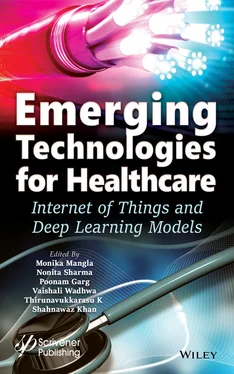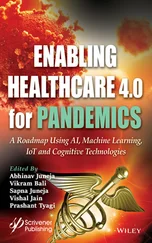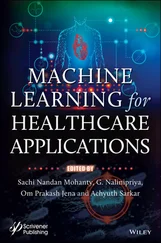207 207
208 208
209 209
210 210
211 211
212 212
213 213
214 214
215 215
216 216
217 217
218 218
219 219
220 220
221 221
222 222
223 223
224 224
225 225
226 226
227 227
228 228
229 229
230 230
231 231
232 232
233 233
234 234
235 235
236 237
237 238
238 239
239 240
240 241
241 242
242 243
243 244
244 245
245 246
246 247
247 248
248 249
249 250
250 251
251 252
252 253
253 254
254 255
255 256
256 257
257 258
258 259
259 260
260 261
261 262
262 263
263 264
264 265
265 266
266 267
267 268
268 269
269 270
270 271
271 272
272 273
273 274
274 275
275 276
276 277
277 279
278 281
279 282
280 283
281 284
282 285
283 286
284 287
285 288
286 289
287 290
288 291
289 292
290 293
291 294
292 295
293 296
294 297
295 298
296 299
297 300
298 301
299 302
300 303
301 304
302 305
303 306
304 307
305 308
306 309
307 310
308 311
309 312
310 313
311 315
312 316
313 317
314 318
315 319
316 320
317 321
318 322
319 323
320 324
321 325
322 326
323 327
324 328
325 329
326 330
327 331
328 332
329 333
330 334
331 335
332 337
333 338
334 339
335 340
336 341
337 342
338 343
339 344
340 345
341 346
342 347
343 348
344 349
345 350
346 351
347 352
348 353
349 354
350 355
351 356
352 357
353 358
354 359
355 360
356 361
357 362
358 363
359 364
360 365
361 366
362 367
363 368
364 369
365 370
366 371
367 372
368 373
369 374
370 375
371 376
372 377
373 378
374 379
375 380
376 381
377 382
378 383
379 384
380 385
381 386
382 387
Scrivener Publishing100 Cummings Center, Suite 541J Beverly, MA 01915-6106
Publishers at Scrivener
Martin Scrivener ( martin@scrivenerpublishing.com) Phillip Carmical ( pcarmical@scrivenerpublishing.com)
Emerging Technologies for Healthcare
Internet of Things and Deep Learning Models
Edited by
Monika Mangla,
Nonita Sharma,
Poonam Mittal,
Vaishali Mehta Wadhwa,
Thirunavukkarasu K.
and
Shahnawaz Khan

This edition first published 2021 by John Wiley & Sons, Inc., 111 River Street, Hoboken, NJ 07030, USA and Scrivener Publishing LLC, 100 Cummings Center, Suite 541J, Beverly, MA 01915, USA
© 2021 Scrivener Publishing LLC
For more information about Scrivener publications please visit www.scrivenerpublishing.com.
All rights reserved. No part of this publication may be reproduced, stored in a retrieval system, or transmitted, in any form or by any means, electronic, mechanical, photocopying, recording, or otherwise, except as permitted by law. Advice on how to obtain permission to reuse material from this title is available at http://www.wiley.com/go/permissions.
Wiley Global Headquarters111 River Street, Hoboken, NJ 07030, USA
For details of our global editorial offices, customer services, and more information about Wiley products visit us at www.wiley.com.
Limit of Liability/Disclaimer of WarrantyWhile the publisher and authors have used their best efforts in preparing this work, they make no representations or warranties with respect to the accuracy or completeness of the contents of this work and specifically disclaim all warranties, including without limitation any implied warranties of merchantability or fitness for a particular purpose. No warranty may be created or extended by sales representatives, written sales materials, or promotional statements for this work. The fact that an organization, website, or product is referred to in this work as a citation and/or potential source of further information does not mean that the publisher and authors endorse the information or services the organization, website, or product may provide or recommendations it may make. This work is sold with the understanding that the publisher is not engaged in rendering professional services. The advice and strategies contained herein may not be suitable for your situation. You should consult with a specialist where appropriate. Neither the publisher nor authors shall be liable for any loss of profit or any other commercial damages, including but not limited to special, incidental, consequential, or other damages. Further, readers should be aware that websites listed in this work may have changed or disappeared between when this work was written and when it is read.
Library of Congress Cataloging-in-Publication Data
ISBN 978-1-119-79172-0
Cover image: Pixabay.Com
Cover design by Russell Richardson
Set in size of 11pt and Minion Pro by Manila Typesetting Company, Makati, Philippines
Printed in the USA
10 9 8 7 6 5 4 3 2 1
The use of computing technologies in the healthcare domain has been creating new avenues for facilitating the work of healthcare professionals. Several computing technologies, such as machine learning and virtual reality, have been flourishing and in turn creating new possibilities. Computing algorithms, methodologies and approaches are being used to provide accurate, stable and prompt results. Moreover, deep learning, an advanced learning technique, is striving to enable computing models to mimic the behavior of the human brain; and the Internet-of-Things (IoT), the computer network consisting of “things” or physical objects in addition to sensors, software or methods, is connecting to and exchanging data with other devices. Therefore, the primary focus of this book, Emerging Technologies for Healthcare , is to discuss the use and applications of these IoT and deep learning approaches for providing automated healthcare solutions.
Our motivation behind writing this book was to provide insight gained by analyzing data and information, and in the end provide feasible solutions through various machine learning approaches and apply them to disease analysis and prediction. An example of this is employing a three-dimensional matrix approach for treating chronic kidney disease, the diagnosis and prognostication of acquired demyelinating syndrome (ADS) and autism spectrum disorder, and the detection of pneumonia. In addition to this, providing healthcare solutions for post COVID-19 outbreaks through various suitable approaches is also highlighted. Furthermore, a detailed detection mechanism is discussed which is used to come up with solutions for predicting personality through handwriting recognition; and novel approaches for sentiment analysis are also discussed with sufficient data and its dimensions.
This book not only covers theoretical approaches and algorithms, but also contains the sequence of steps used to analyze problems with data, processes, reports, and optimization techniques. It will serve as a single source for solving various problems via machine learning algorithms. In brief, this book starts with an IoT-based solution for the automated healthcare sector and extends to providing solutions with advanced deep learning techniques.
Читать дальше













